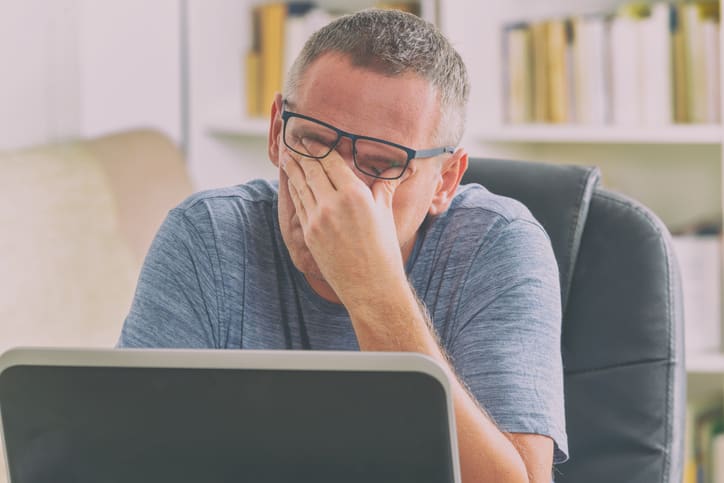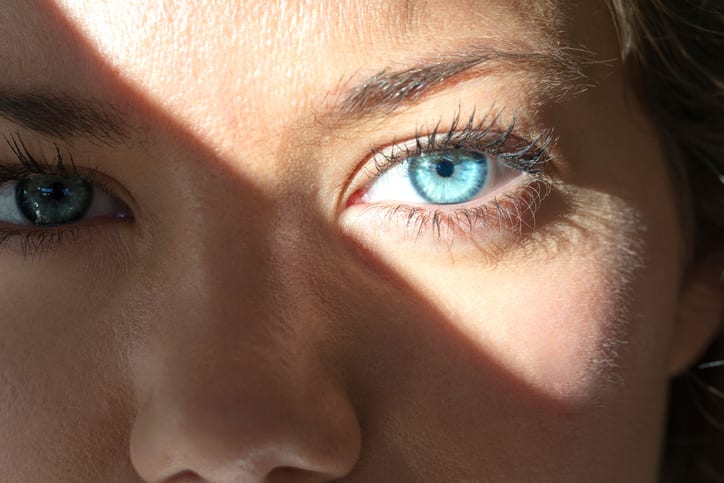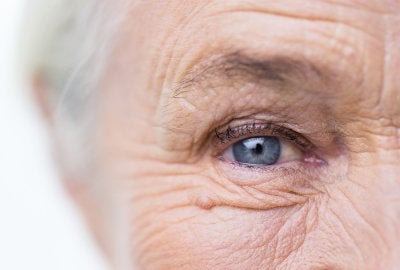-
How to Know if a Painful Eye is an Emergency

When your eye hurts, it’s hard to think of anything else. Whether it’s an itching, burning, shooting pain on the surface of your eye, or a deeper, throbbing pain inside your eye, eye pain can be excruciating and hard to manage. Should you see a doctor? Is it time to go to the emergency room? If the pain is severe enough, or if you’ve lost vision, the answer may be yes. Here’s how to know whether your painful eye is an emergency.
What can cause a painful eye? It could be allergies, illness, injury, infection, or a foreign body in the eye. Symptoms vary, but if you have any of the following symptoms, you should consider calling for an appointment with an eye doctor.
- Eye pain
- Redness
- Irritation caused by contact lenses
- Discharge
- Eye injury
- Welder’s burn
- Swelling or puffiness
- Styes
Sometimes, though a painful eye is too severe to allow you to wait for a doctor’s appointment. Trying to wait it out could cause the problem to get worse, and might even result in a loss of vision. Seek emergency medical care as soon as possible if you have any of the following symptoms.
- Unusually severe eye pain, especially if it’s accompanied by a headache, fever, or sensitivity to light
- A sudden change in vision
- Eye pain with nausea or vomiting
- A foreign object or chemical in your eye
- Halos around lights
- Trouble moving your eye or an inability to keep it open
- Blood or pus coming from your eyes
If you have an eye emergency, and it’s after regular office hours, you may have no choice but to go to the emergency room. If you can catch the problem before offices close, though, it’s a much better idea to see an eye doctor. Emergency rooms don’t always have the right equipment for examining the eyes, and they might not have doctors or nurses who specialize in caring for eyes. Because a misdiagnosis could potentially result in vision loss, and because you’ll probably be given a referral to an eye doctor anyway, it’s typically better to skip the ER and go straight to an ophthalmologist or optometrist.
Even if it’s after hours, if you call your eye doctor there may be information available, either in a recorded message or through the doctors’ answering service, about where to seek emergency eye care. There are situations, though, in which an emergency room trip is warranted. If you’re injured in other places in addition to the eye, if your eye has been impaled, if you are bleeding from the eyes, or if you’ve had a head trauma, it’s smart to head to the ER. What you should never do is try to treat painful eye conditions on your own, without the benefit of medical advice.
If you are looking for an eye doctor, the Gerstein Eye Institute in Chicago can help. Since 1968, the Gerstein Eye Institute has been providing exceptional ophthalmologic care to patients in the Chicago area. With decades of experience in ophthalmology, our certified professional staff members work hard to provide the kind of personalized care that keeps patients coming back year after year, eventually entrusting the eye health of their children and grandchildren to us as well. To schedule an appointment, call us at 773.596.9545 or contact us through our website.
-
How to Maintain Healthy Eyes as You Age

The older you get, the more your doctor emphasizes the importance of eating well and exercising to stay healthy. Good nutrition and physical activity certainly benefit your body, but making specific lifestyle changes can also help delay or prevent age-related eye diseases. Follow these tips to maintain healthy eyes as you age.
Schedule Regular Eye Exams
Annual visits to the eye doctor are recommended for everyone, but once you hit 40, regular eye exams become even more crucial. Yearly visits can help catch glaucoma, macular degeneration and other eye diseases in their early stages, making them easier to treat. Your eye doctor can also detect other non-sight related illnesses during a comprehensive eye exam, including hypertension, diabetes, STDs and some forms of cancer.
Visit the Eye Doctor if You Injure Your Eyes
It isn’t enough to rinse your injured eye under cool water and hope it gets better. If you experience vision problems or eye discomfort at any time, call your eye doctor right away. Receiving professional medical attention is the best way to safeguard your vision.
Protect Your Eyes from Bright Light
Chronic exposure to UV rays and sources of high-energy “blue light” can damage the macula, cornea and lens. To shield your eyes, try these suggestions:
- Wear dark-tinted sunglasses while outside.
- Turn on your computer’s “night light” feature to decrease the amount of blue light the screen emits.
- Wear blue-blocking computer glasses with yellow-tinted lenses.
- Illuminate your home with CFLs and LEDs that emit “warm” light.
Adopt a Healthy Diet
The food you eat doesn’t just affect your waistline – it also contributes to healthy eyes. If you eat a diet high in saturated fat and sugar, you increase your risk of eye disease. On the other hand, eating natural, healthy food can help prevent vision problems. Here’s what to include in your diet to improve eye health as you age:
- Dark green and brightly colored fruits and vegetables for vitamin A, vitamin C, lutein and zeaxanthin
- Fish, nuts and plant-based oil for omega-3 essential fatty acids
- Lean meat, legumes, fish and eggs for protein
- Whole grains to avoid the sugars in refined white flour
- Water and other sugar-free, caffeine-free drinks to stay hydrated
Quit Smoking
Smoking increases the amount of oxidative stress in your body, which can increase your chances of developing age-related macular degeneration (AMD), cataracts and glaucoma. Give up smoking, and you’ll improve nearly every aspect of your health, including your vision.
Get Enough Sleep
Maintaining a healthy sleeping pattern improves your overall well-being. It’s also a chance to rest your eyes and help them rejuvenate for the following day. Aim for at least seven hours of sleep each night. Avoid looking at your Smartphone right before bed, as the blue light of the LED screen can keep you awake.
For more tips to maintain healthy eyes as you age, or to schedule an eye exam in Chicago, IL, please contact Gerstein Eye Institute at 773.596.9545.
-
How Does Bright Light Affect Your Vision?

The iris serves as your eye’s main defense against bright light. This is the colored part of your eye responsible for reducing and enlarging the size of your pupil. When intense light rays reach your eye, the iris responds by constricting the pupil, thus protecting the retina and helping it process the incoming image better. The opposite occurs in low light when the iris dilates the pupil to allow as much light in as possible.
Can Bright Light Damage Your Vision?
In short, yes, staring at bright lights can damage your eyes. When the retina’s light-sensing cells become over-stimulated from looking at a bright light, they release massive amounts of signaling chemicals, injuring the back of the eye as a result.
The sun shines with such intensity that staring directly at it for just a few seconds can cause permanent retinal damage. Chronic exposure to UV rays over many weeks, months or years can also harm the macula, cornea and lens. A damaged macula leads to macular degeneration. A “sunburned” cornea can cause blurry vision and loss of eyesight. A damaged lens may develop a cataract, or clouding of the lens that blurs vision.
Blue light, even at moderate intensity levels, can damage your retinas slowly over time. Blue light has shorter wavelengths than warmer light, so it has more energy. Prolonged exposure may increase the risk of age-related macular degeneration (AMD). Sunlight is the most prominent source of blue light, but other examples include fluorescent lights, LEDs, TVs, computer monitors and Smartphone screens.
How to Treat and Prevent Eye Problems from Bright Light
Protect your vision with these tips:
- Choose glasses with anti-reflective lenses to reduce glare from bright lights.
- Wear dark-tinted sunglasses and a brimmed hat while outside. Polarized sunglasses with UV protection further shield your eyes from the effects of blue light and ultraviolet rays.
- Decrease daily screen time and take frequent breaks to rest your eyes.
- Turn on your computer’s “night light” feature to decrease the amount of blue light the screen emits.
- Wear blue-blocking computer glasses with yellow-tinted lenses that ease digital eyestrain.
- Choose CFLs and LEDs that emit “warm” light.
- If you require cataract surgery, seek blue-blocking intraocular lens (IOL) implants to protect your retinas the same way sunglasses do.
If you’re experiencing any vision problems or discomfort after exposure to bright light, visit Gerstein Eye Institute in Chicago, IL for an evaluation. Our commitment to helping patients protect their vision dates back to 1968. For more information, or to schedule an eye appointment, please contact us at 773.596.9545 today.
-
Seasonal Allergies and Eye Care
Spring is on its way, bringing with it pollen, in all its allergy-inducing glory. If you’re sensitive to pollen, you’re probably already gearing up for a miserable couple of months, but it doesn’t have to be that way. You can minimize allergens in your home, protect yourself outside, and give your eyes the care they deserve. Here, we offer a few tips from the experts on seasonal allergies and eye care. Pollen is the main cause of springtime allergies, and it can travel for miles before finding its way into your nose. If you’re allergic to pollen, your immune system mistakes it for something dangerous and releases antibodies to attack it. Histamines are released into the blood, triggering a runny nose, itchy eyes, and other allergy symptoms. Fortunately, there are some good ways to keep pollen at bay.
- Don’t let pollen into your house. Even though the weather may be pleasant, it’s best to keep doors and windows closed, especially at night. Stay inside as much as possible in the early morning hours, because pollen is typically emitted between 5 and 10 am. If you’ve been outside, take a shower and change clothes as soon as you get home, and never dry clothing or linens outside, where it can pick up pollen.
- Clean your home thoroughly to remove allergens. Pollen is one culprit, but there’s also dust, pet dander, mold, and cockroach droppings to contend with. Cleaning on a regular schedule can help minimize allergens in your home and help you breathe easier. Wear a dust mask when you’re cleaning, and use a damp or treated cloth to dust, so you don’t scatter the dust. Vacuum once or twice a week, using a vacuum with a HEPA filter. Wash your bedding at least once a week in hot water, and dry it in a hot dryer. If you have pets, bathe them once a week to keep dander under control, and wash your hands any time you pet an animal.
- Protect yourself from allergens when you’re outside. Wear glasses, to keep pollen out of your eyes. If you want to enjoy the outdoors, do it on cloudy, windless days, because pollen levels are higher when it’s dry, warm, and windy. Finding out what you’re allergic to can be very helpful: if you can recognize it on sight you can more easily avoid it, and if you know what it is you can stay inside during its high pollen hours.
- If you’re suffering from eye allergies, have a plan to treat them. Using lubricating eye drops can help rinse away pollen, as can saline nose spray. Decongestant eye drops can constrict the blood vessels in the eyes, reducing redness, but shouldn’t be used for more than three days. Oral antihistamines can sometimes help, but in some cases, they can cause dry eyes and may worsen eye allergy symptoms.
- Ask your doctor for help. There are prescription medications that can be helpful in controlling eye allergy symptoms. There are antihistamine, mast cell stabilizer, NSAID and corticosteroid eye drops that can alleviate or prevent allergy symptoms. Your doctor may also prescribe non-sedating oral antihistamines, or recommend allergy shots.
One of the leading eye centers in Illinois, the Gerstein Eye Institute in Chicago has been helping patients take care of their eyes since 1968. Our certified professional staff has decades of ophthalmologic experience and has worked together to perform over 20,000 procedures. Dr. Gerstein, well-versed in the most advanced technologies, is committed to helping patients find the treatment that’s right for you. For more information call (773) 596-1245 or visit our website today.
-
Eyewear Trends 2018
If you wear glasses, it can be fun to keep up with the latest eyewear trends, because the right eyewear can be an accessory that completes your signature style. Do you know what’s hot this year? If you want to be on point for 2018, here are some trends you’ll need to know.
- Two-tone frames are a fun trend. Whether the frames are one color on the rims and another on the temples, or the tops and bottoms of the rims are shaded differently, expect to see plenty of pairs of two-toned glasses this year.
- Bold colors are everywhere in eyewear this year. Whether your favorite color is purple, teal, blue or red, you’ll find frames to suit your style. There is also a wide range of pastel hues from which to choose in 2018. Not feeling the full force of color? Try a subtler look, wearing translucent frames with faded colors, or go for clear, white or neutral frames.
- 2018 is the year of unique shapes in eyewear. Look for lots of angles, and lenses set in contradictory frames to create a shape within a shape. You’ll also see square and round frames, and frames embellished with crystal, beads, and other decorative touches.
- Eyewear styles in 2018 will give you a look forward and back. Look for lots of angles, and lenses set in contradictory frames to create a shape within a shape. You’ll also see square and round frames, and frames embellished with crystal, beads, and other decorative touches.
- Cat eye wood frames are a twist on a couple of different trends. Cat eye frames are a big part of the retro look this year, and can really come in any color, from tortoiseshell to bright primary tones. A natural material like wood makes them modern, though. Whether they’re made of pear wood, bamboo, maple, sandalwood, or zebrawood, these frames are a conversation starter. One benefit of wooden frames? They float.
Are you ready to take the plunge and update your glasses? Schedule a doctor’s visit to make sure your eyes are healthy, first. One of the leading eye centers in Illinois, the Gerstein Eye Institute in Chicago has been helping patients take care of their eyes since 1968. Our certified professional staff has decades of ophthalmologic experience and has worked together to perform over 20,000 procedures. Dr. Gerstein, well-versed in the most advanced technologies, is committed to helping patients find the treatment that’s right for you. For more information call (773) 596-1245 or visit our website today.
-
Benefits of Various Lenses
If you wear glasses, do you wear the same lenses all the time? It may be time to rethink that. Advances in eyewear have created so many different options that it’s possible to find lenses that make everything you’re doing a little bit easier, from computer work to playing sports and everything in between. In fact, there are so many options that you may be confused about which lenses are right for you. Here, we break down some different types of lenses to help clear up any confusion.
- Glass lenses are not a great idea. Glass used to be the only option, but it’s heavy and prone to breakage. That’s unfortunate because glass has the best optical clarity, but with all the other choices, it’s just not very practical. Now that there are so many other good options on the market, glass lenses are hardly ever used.
- CR-39 plastic lenses provide almost as much optical clarity as glass but are half as heavy. They’re also inexpensive, resistant to shattering, and not easily scratched. However, if you have a high prescription, CR-39 lenses will be very thick. Also, while they’re tough enough to handle the stress of regular life, they may not be the best option if you’re rough with your glasses. If you plan to go mountain-biking, for instance, you might want to choose another option.
- High-index plastic is lighter and thinner than CR-39. High-index lenses come in a variety of prescription options and are compatible with anti-reflective coating.
- Polycarbonate has been around since the 70’s, but it’s still a popular choice. Lighter and more impact-resistant than CR-39 plastic, polycarbonate was originally developed for safety applications, like bulletproof glass and Air Force helmet visors. It’s a great choice for children’s eyewear, safety glasses, and sports eyewear.
- Trivex is a lot like polycarbonate, but better. It’s got the same impact-resistant properties, but is lighter weight and is less likely to cause optical distortions in the peripheral vision. Both Trivex and polycarbonate lenses block UV rays without the need for special coating, which is also beneficial.
- Gunnar lenses make screen time easier on the eyes. That’s because they have a special anti-reflective coating that blocks high-energy artificial blue light, UV light, and glare, in order to protect your vision and reduce eye-strain. They’re expensive, even when they’re not prescription lenses, but it may be worth the money if you spend a lot of time in front of a screen, and you’re experiencing issues like strained, dry, or red eyes, blurred vision, or headaches.
- Transition lenses work both in and out of the sun. A convenient option, these lenses darken when the wearer goes out into the sunlight, and lighten indoors. This eliminates the need for two pairs of glasses, which saves money and hassle. They come in many different varieties, including shatter-resistant, bifocal and progressive.
The first step in choosing the right lenses is choosing the best eye doctor. One of the leading eye centers in Illinois, the Gerstein Eye Institute in Chicago has been helping patients take care of their eyes since 1968. Our certified professional staff has decades of ophthalmologic experience and has worked together to perform over 20,000 procedures. Dr. Gerstein, well-versed in the most advanced technologies, is committed to helping patients find the treatment that’s right for you. For more information call (773) 596-1245 or visit our website today.
-
Tips for Preventing Eye Injuries
As your ophthalmologist in Chicago will tell you, eye care comes down to more than just regular vision check-ups. October is Eye Injury Prevention Month, and there are plenty of steps you can take to help protect your eyes from harm. Read on for some tips on preventing eye injuries.

Gear Up for Sports
Whether you’re a member of an active sports league, or you only play the occasional game of baseball with friends or colleagues, protecting your eyes while participating in athletic activities can be essential for protecting your eye health. While there are many sports that can pose a threat to your eyes, some of the ones that are commonly associated with eye injuries include baseball, hockey, paintball, racquetball, and fishing.
Wear Shades During the Day
With the arrival of fall, you may be less concerned with protecting your body from the sun’s ultraviolet (UV) rays. However, it’s important to realize that UV rays reach the earth’s surface year-round, even on cloudy days. For this reason, you should continue wearing sunglasses that block 100% of UV rays throughout the fall and winter. This eye safety step is particularly important if you plan to spend time skiing or on the water, as sunlight can reflect off of snow and water and potentially harm your eyes. According to ophthalmologists, eyes can suffer something similar to a sunburn, called photokeratitis, when damaged by UV rays.
Practice Safety Throughout Projects
If you have a home improvement to-do list that you’re hoping to get through this season, then your eye doctor would want you to remember to practice good eye safety as you take on each of these tasks. Even small projects, such as installing shelving or trimming shrubs, can lead to eye injuries if you’re not careful. To protect your eyes from the dangers of flying objects like nails, wood splinters, and branches, remember to wear safety glasses or another form of protective eye wear while working on your DIY projects.
-
Recognizing Household Eye Hazards
Good eye care and visits to your eye doctor in Chicago are important year-round. However, October is eye safety month, so now is a great time to learn what objects around your house may pose a threat to your vision. Continue reading to discover some common household eye hazards.

Lawn and Garden Work
If you’re planning to spend time in your yard this season to get your lawn and garden ready for cold weather, then be sure to wear protective eye gear when you do. Tasks that you may have done countless times, such as mowing the lawn or using an electric trencher, can pose a danger to your eyes, as grass, pebbles, twigs, and similar objects may fly out from under the equipment toward your face. For this reason, whether you’re trimming the hedges or the lawn, you can help avoid a trip to the eye doctor by remembering to protect your eyes.
Home Improvement Tasks
If you’re like many homeowners, then you do what you can to take care of basic repairs around the home. While this can be practical and economical, it’s critical to think of your safety when taking on DIY home improvement tasks. Remember to wear safety goggles when you use a drill or hammer nails, work with solvents or hazardous chemicals, or secure objects with bungee cords. Whenever you use tools of any kind or perform tasks that may produce eye irritants or airborne fragments, remember to shield your eyes with the right protective gear.
Day-to-Day Tasks
There are also many everyday activities that can be potentially harmful to your eyes. For example, hot liquid or oil that splatters while you’re cooking can lead to burns, and allowing the cork to fly when opening a bottle of champagne can also cause an eye injury. Taking care to recognize potential hazards for your eyes, no matter what the activity, can help protect your vision. Speak with your eye doctor to learn what else you can do to protect your eyes from household hazards.
-
Preserving Your Eyesight as You Age
September is Healthy Aging Month, and people of all ages and walks of life are invited to participate. After all, good health in your golden years starts with a commitment to preventive wellness earlier in life. And if you’re already eligible for an AARP card, it’s never too late to get serious about your wellness. As you celebrate each passing year, you should pay attention to the changing needs of your eye health. In Chicago, eye doctors encourage patients to schedule regular exams, even if they don’t wear eyeglasses or contact lenses.

Schedule an eye exam.
Your ophthalmologist will let you know how often you should schedule an eye exam. If you’re 65 or older, you’ll probably need one every year or two. A comprehensive eye exam is an opportunity for the doctor to check for potential red flags of eye disease. With early treatment, it’s possible to delay the progression of eye diseases. It isn’t always easy to remember to schedule an appointment that only happens every year or two. Solve this problem by making your next appointment before you leave the optician’s office, and check that the office will send you a reminder card or email.
Wear sunglasses.
Sunglasses are much more than just a fashion statement. They can protect your eyes from the harmful ultraviolet (UV) rays. UV light increases the risk of cancer, cataracts, and growths on the eye. Look for sunglasses that offer broad-spectrum UV protection, and wear them each time you go outdoors. If you wear prescription eyeglasses, you can visit an optical center to order prescription sunglasses. Wearing a wide-brimmed hat can also help shield your eyes.
Quit smoking and avoid secondhand smoke.
There are dozens upon dozens of compelling reasons to quit smoking, including its detrimental effects on eye health. Smokers are more likely to be diagnosed with macular degeneration, cataracts, and dry eyes. They’re also at a higher risk of cardiovascular diseases, which can indirectly worsen eye health. It’s never too late in life to quit smoking. Consider it an investment in your future, just like saving for retirement. If you don’t smoke, don’t start. Avoid being near anyone who is smoking, as secondhand smoking is also harmful.
-
Help Protect Your Vision with Regular Eye Exams
Just like physical exams and dental check-ups, eye exams from an ophthalmologist are an essential part of a complete preventive wellness plan. If it’s been longer than a year or two since you’ve visited an optical center near Chicago, it’s time to make an appointment. Even if you aren’t experiencing any vision problems, it’s important to have regular eye exams . You can learn why when you watch this animation.
It explains that the symptoms of serious eye diseases aren’t always detectable right away. You might not experience dark spots or cloudy vision until diabetic retinopathy and cataracts are already in the advanced stages—but an eye doctor can. He or she will let you know how often you should get an exam, based on your family health history, personal health history, and age. And if you do experience any sudden changes in your vision, get to an optical center right away.
